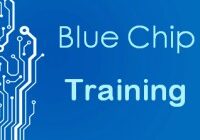 Overview
Overview
Oracle Database 18c is the next iteration of Oracle Database 12c Release 2, or “the first patch”.
This instructor-led, live training (online or onsite) is aimed at engineers who wish to set up, deploy, migrate to and manage an Oracle 18c Database.
By the end of this training, participants will be able to:
- Understand the major feature and architectural changes from previous Oracle versions.
- Migrate to Oracle 18c from a previous version.
- Deploy Oracle 18c in cloud or on premise.
- Understand Oracle 18c’s new yearly release cycle and plan maintenance around it.
Format of the course
- Interactive lecture and discussion.
- Lots of exercises and practice.
- Hands-on implementation in a live-lab environment.
Course Customization Options
- To request a customized training for this course, please contact us to arrange.
Requirements
- Experience with Oracle Database.
Audience
- Database engineers
- Developers
- System administrators
Course Outline
Introduction
- Oracle 18c and Oracle’s Autonomous Database Cloud
Overview of Oracle 18c Features and Architecture
- On-premises and in cloud
Oracle 18c Incremental Enhancements over Oracle Database 12c Release 2.
- Performance, High Availability, Multitenant Architecture, Security, Data Warehousing and Application Development
Oracle 18c Major Enhancements over Older Versions
- Multitenant, Database In-Memory, Database Sharding, Connection Manager, etc.
Oracle 18c Deprecated Features from Older Versions
- Non-CDB architecture, Oracle Streams, Oracle Multimedia, Oracle Administration Assistant for Windows, etc.
Upgrading from Previous Versions of Oracle
- Multi-step Upgrade (10g => 12c => 18c)
- Datadump “Upgrade” (Import/Export)
Understanding Oracle’s Autonomous Database Cloud
- Cost-based Optimization, Performance Tuning and Diagnostics, Data Automization, Cloud Operations
Automating Routine Administrative Tasks
- Self-driving, Self-securing, Self-repairing
Deploying Oracle to a Public, Private and Hybrid Cloud
- Oracle Cloud and Oracle Exadata
Troubleshooting
Summary and Conclusion
